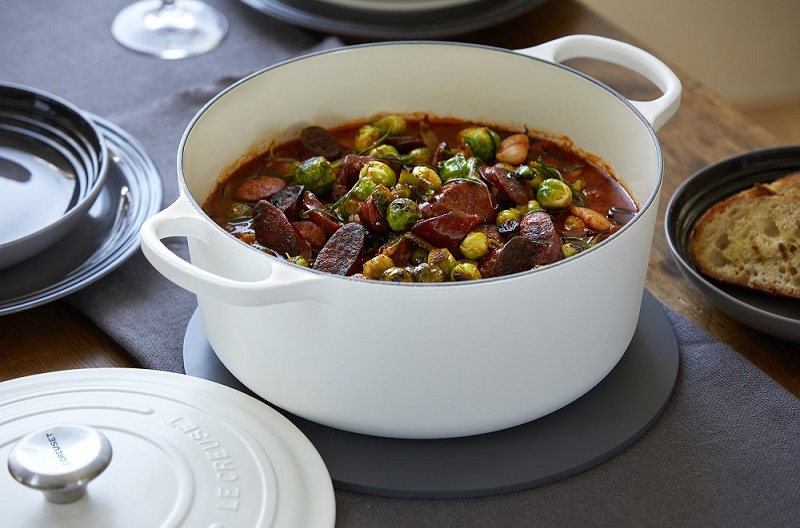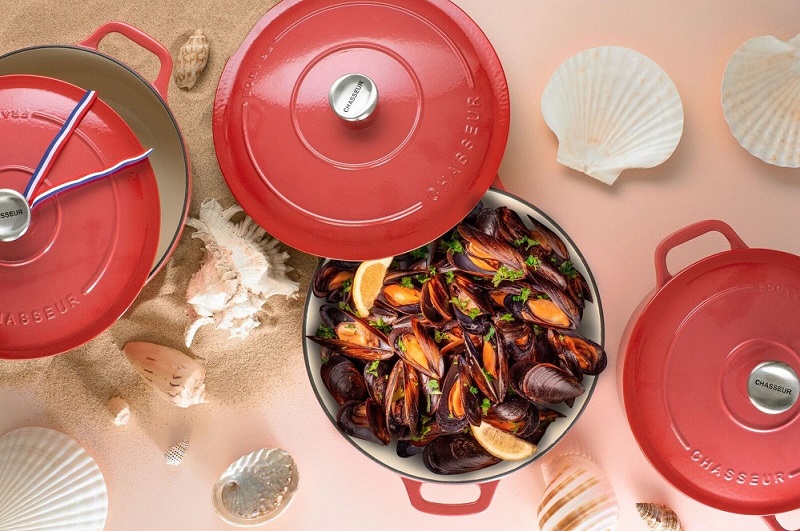
Chasseur and Le Creuset produce top quality French Ovens, but what sets them apart?
Deciding between a Chasseur or Le Creuset Cast Iron Casserole? Most home cooks on the hunt for a new French Oven would often find themselves at an impasse between both. It's not surprising as both of these cookware brands produce top quality cast iron French Ovens appreciated by both professionals and home cooks alike.
However, ask anyone who has used both and they will confirm there are clear differences between Chasseur and Le Creuset's French Ovens. Before diving into their similarities and differences, it's important to go a little deeper into who and what these brands are.
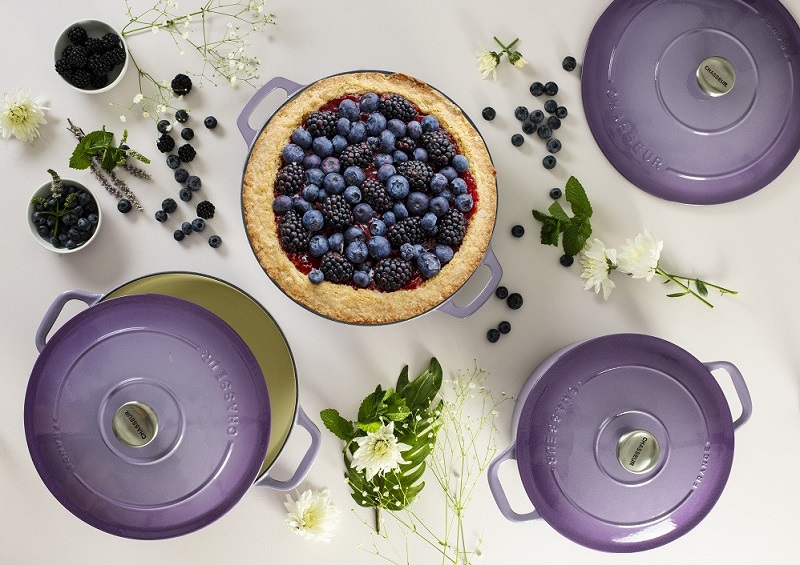
Chasseur
Chasseur was founded in 1924 by Fernand Sueur and began productions in the Invicta foundry in Donchery, France. Close to a century after, Chasseur continues to manufacture cast-iron casseroles and cookware with the same timeless process by hand. The first phase involves casting the cast-iron item, followed by enamelling, which gives the item its gorgeous colour. As of 2019, Chasseur's globally available casseroles have since become the symbol of influence of French gastronomy.
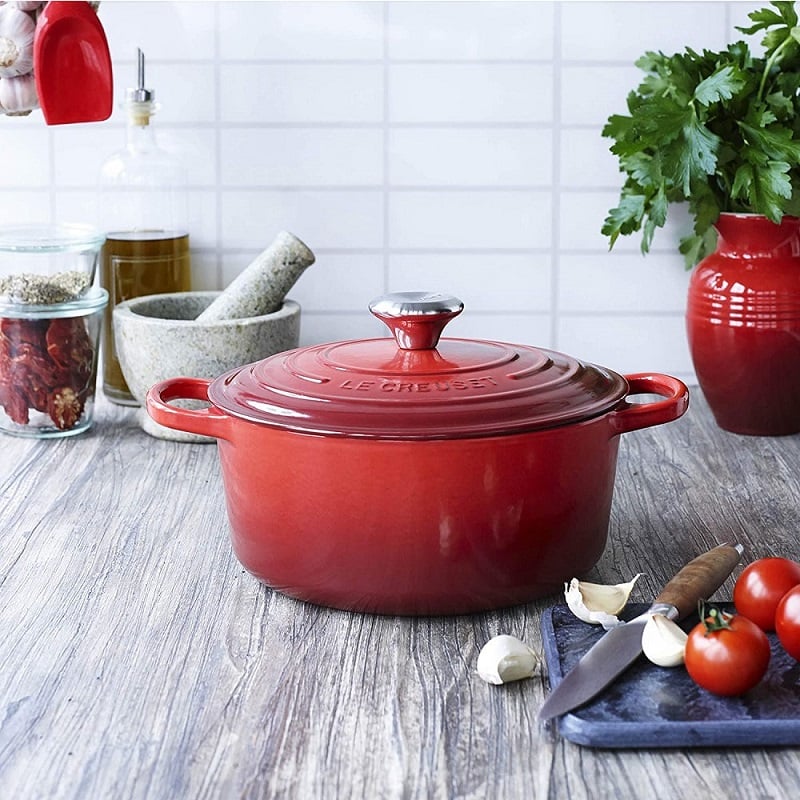
Le Creuset
Le Creuset began by producing its first porcelain enamelled cast-iron pot in 1925 from its foundry in Fresnoy-le-Grand, France. Though they are renowned around the world for their high quality French Ovens, Le Creuset also offers a broad selection of cookware other than cast-iron. To date, Le Creuset still manufactures their popular French Ovens by hand through the original process of forging and casting. Le Creuset is also known for their extensive offering of colours to suit all kitchens and lifestyles. Thanks to their popularity, French ovens are often synonymous to the Le Creuset brand.
Similarities between Chasseur and Le Creuset
Construction
Le Creuset and Chasseur's French Ovens are both enamelled cast-iron made in France. Cast iron is a fantastic material as it excellently retains heat and evenly distributes it, ensuring no hot spots as you cook. Your food will also stay warm for a longer duration, making it the perfect oven to table piece. As cast-iron is extremely durable, Chasseur and Le Creuset's French Ovens often become heirloom pieces in the family.
Enamelled Interior
Chasseur and Le Creuset's French Ovens feature a light coloured vitreous enamel interior. This porcelain layer prevents food from sticking on your cookware, and it also allows you to easily monitor your cooking progress. If you often have trouble dealing with stuck bits while making a pasta bake for example, you'll enjoy the easy release offered by smooth enamelled cast-iron cookware.
Tight Fitting Lid
Both Chasseur and Le Creuset utilise a heavy, tight fitting lid on their French Ovens. This prevents moisture from escaping as you cook, ensuring that your dishes come out moist and tender. The lid also comes equipped with a stainless steel knob, allowing you to safely transfer your dish from the stovetop to the oven.
Suitable on all Cooktops
The beauty of cast iron is its versatility. French Ovens made from cast-iron can be used on all cooktops, yes even induction cooktops! From electric to gas stoves and induction hobs, both Le Creuset and Chasseur French Ovens can even be cooked in the oven as mentioned above.
Made in France
Both Chasseur and Le Creuset are proudly made in France, albeit in different areas. Chasseur produces their French Ovens in their foundry in Ardennes, France, while Le Creuset produces their signature French Ovens in Fresnoy-le-Grand, France.
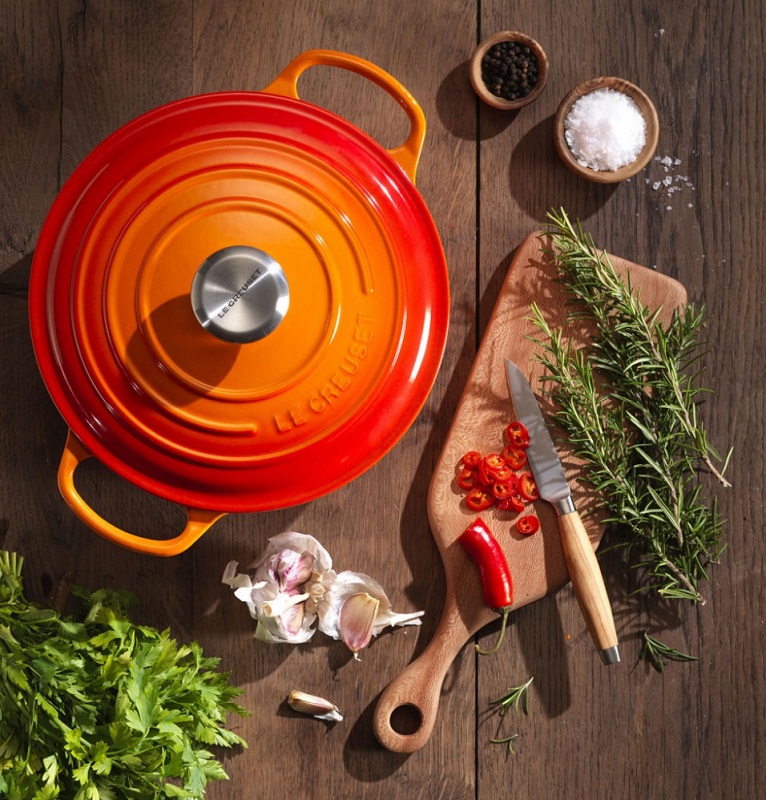
Stylish Colours
Le Creuset and Chasseur's French Ovens come in various beautiful colours to suit all homes and lifestyles. Selecting between Le Creuset and Chasseur based on looks alone is tough thanks to its array of stunning colours.
Differences between Chasseur and Le Creuset
Enamel Layers
While Chasseur and Le Creuset French Ovens are both enamelled cast-iron, the amount of enamel layers separate the two. Chasseur's French Ovens have 2 layers of enamel finish, while Le Creuset features 3 layers. Le Creuset's additional layer gives it an edge against Chasseur in terms of durability. However, if properly cared for, both French Ovens can last a lifetime.
Weight
In terms of weight, Le Creuset's French Ovens weigh the lightest. Even so, its lightweight construction does not negatively impact its cooking performance nor durability thanks to years of research and development to engineer the perfect balance of weight while retaining incredible cooking performance. Chasseur's French Ovens are heavier, so users who suffer from carpal tunnel or struggle with heavy weights may be more inclined to choose Le Creuset.
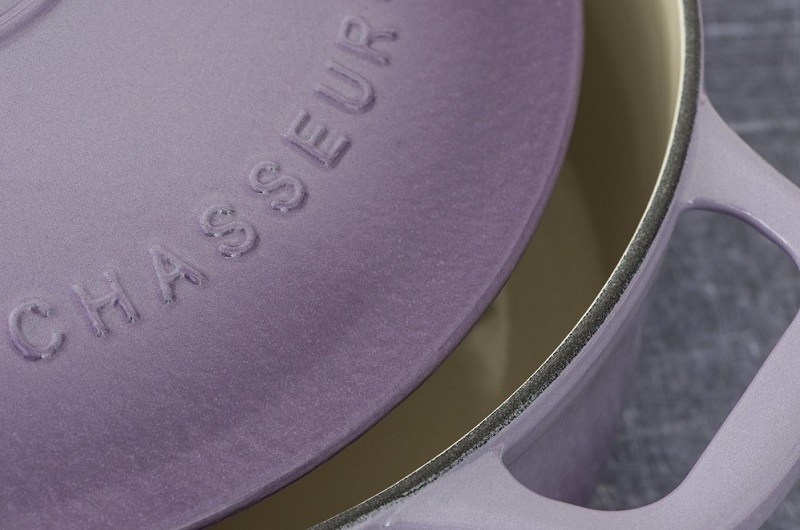
Size of Handles
Frequent entertainers who enjoy serving directly from stovetop or oven to table may prefer Le Creuset's French ovens for their larger handles, purposely designed to make it easy to carry and transfer even with oven gloves on. Chasseur's handles are a little smaller compared to Le Creuset.
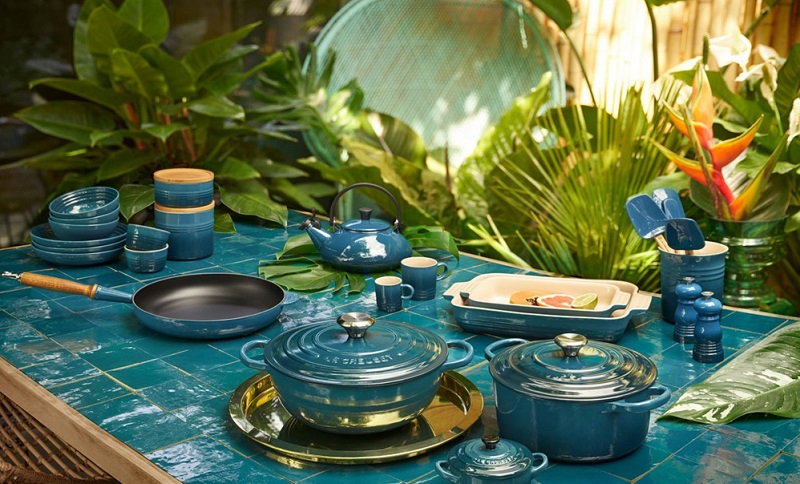
Colours
Chasseur and Le Creuset's French Ovens come in a myriad of beautiful colours, but Le Creuset boasts a broader range of up to 18 colours to choose from. Those seeking a specific colour for their home may prefer Le Creuset due to their vast colour options which expands further into a broader range of cast iron, stoneware, tableware, kitchen tools and even napery!
Price
Le Creuset features a premium price tag as opposed to Chasseur's more affordable one. For instance, a 4L capacity French Oven from Le Creuset is about the same price as a 8L capacity French Oven from Chasseur. This affordable price point makes Chasseur more appealing to first-time cast-iron cookware owners.
So which brand is the best?
Based on what we've distinguished above, both Chasseur and Le Creuset's French Ovens have more similarities than differences. Both offer fantastic cooking performance and are made in France with stringent quality control and premium materials. The most notable factors that separate them would be the price and weight.
Chasseur is the most suitable choice for those seeking to take their first foray into cooking with cast-iron cookware thanks to its affordable price point. It offers great cooking performance and results, perfect for first time users and collectors of cast-iron cookware without breaking the bank.
Those with a higher budget and are familiar cooking with cast-iron would have Le Creuset as their prime choice. Le Creuset's vast colour palette and premium background makes it a more attractive option in comparison to Chasseur. It is also ideal for users who enjoy cooking with cast-iron but prefer a lighter option. Frequent entertainers may also prefer the wide handles of Le Creuset as it allows them to easily serve from oven to table.
As to which brand is the best for you - it's really up to your personal preference. Is this going to be your very first cast iron French Oven? Is budget your determining factor? Or will you base your choice on the French Oven's specifications? If you seek value for money, Chasseur would be your top choice. If you're open to invest in a little luxury for your kitchen, the Le Creuset would be your best bet.

